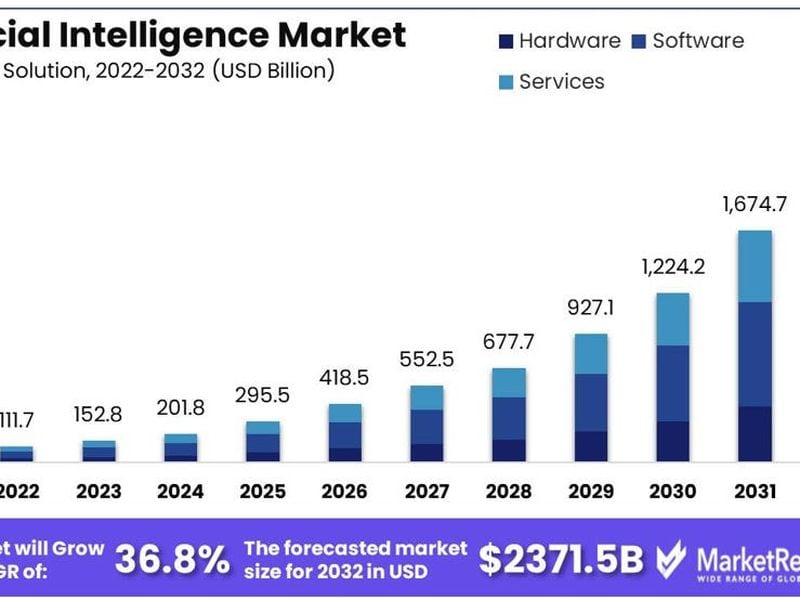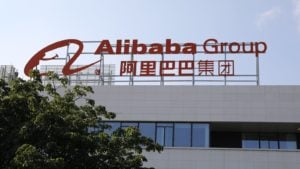In the short span of just over a year since ChatGPT’s debut release, generative AI has rapidly emerged as a definitive influencer on a global scale.
OpenAI’s remarkable strides sparked a wave of investor attention toward large language models (LLMs) and AI applications, funneling an enormous $25 billion in funding by 2023, marking a staggering 5x Year-over-Year increase!
The intersection of AI and crypto technologies has woven a complementary tapestry, as a burgeoning AI ecosystem takes root within Web3. However, amid the fanfare, confusion adorns the landscape. Questions loom about the practical applications of these protocols, distinguishing hype from reality, and threading together the intricate Web3 AI supply chains. Let’s endeavor to chart this complex terrain, deciphering each layer of the Web3 AI tech stack and navigating the competitive landscapes. By the culmination of this exploration, we aim for a rudimentary comprehension of the ecosystem’s mechanics and a keen eye for prospective developments on the horizon.
Mapping the Web3 AI Supply Chain

The infrastructure layer supporting generative AI draws power from LLMs running on high-performance GPUs. Strikingly, LLMs are tasked with three primary workloads: training, fine-tuning, and inference.
This layer is delineated into general-purpose GPU, ML-specific GPU, and GPU aggregators – each distinguished by their diverse workload capabilities and utility. These decentralized P2P markets are driven by crypto incentives, underpinning secure decentralization. However, it’s imperative to note that the actual GPU processing transpires off-chain. Categories Like Akash and Render stand out in the infancy of the general-purpose GPU sector. Yet, the emergence of new contenders adds an air of uncertainty to the protocol differentiation. With an ever-increasing demand for permissionless, GPU-specific compute resources in the Web3 landscape, key long-term differentiators will hinge upon distribution and network effects.
General-purpose GPU

These decentralized marketplaces for GPU computing power are suited for any application type, primarily for model inference. Although compute is essentially a commodity, the Web3 demand for permissionless, GPU-specific compute is anticipated to skyrocket over the next decade. Network effects and distribution will stand as key differentiators for the long haul in this realm.
ML-specific GPU

These marketplaces cater to machine learning (ML) applications, facilitating model training, fine-tuning, and inference. The overlay of ML-specific software presents an opportunity for protocols to establish differentiation, alongside the pivotal factors of distribution and network effects.
GPU Aggregators

These protocols serve as distributors of complete GPU solutions, encompassing model training, fine-tuning, and inference. Io.net emerges as the pioneer in this category, yet the space is primed for additional competitors to surface, driven by the mounting need for consolidated GPU distribution.
Defining the Middleware Layer

The preceding layer delivers permissionless access to GPUs, but middleware assumes the role of connecting this computing resource to on-chain smart contracts in a trust-minimized manner. Here, zero-knowledge proofs (ZKPs) take the stage – a cryptographic technique enabling one party to prove a given statement’s veracity to another party without divulging extraneous information beyond the statement’s truth.
- Zero-Knowledge (ZK) Inference Verification: Decentralized marketplaces for ZKP verifiers to validate inference outputs by specific LLMs, while upholding data and model parameter privacy. Although ZK for machine learning (zkML) is in its initial stages, scalability and expediency must improve for practicality. The potential of ZKPs to open the Web3 and AI design space is profound, should it unravel. Protocols such as =nil;, Giza, and RISC Zero demonstrate considerable developer activity on GitHub. Amidst this evolution, protocols such as Blockless are strategically positioned, irrespective of the victor amongst ZKP providers, due to their roles as aggregation & abstraction layers.
- Developer Tooling & Application Hubs: Web3 developers necessitate tooling, software development kits (SDKs), and services to streamline the creation of applications like AI agents and AI-powered automated trading strategies. These protocols concurrently operate as application hubs, offering direct access to completed applications hosted on their platforms. Leading the way are pioneering names such as Bittensor and Fetch.ai, boasting substantial strides in hosting diverse “subnets” and affording a comprehensive platform for crafting enterprise-grade AI agents.
Exploring the Application Layer

Crowning the tech stack, interfaces catering to end-users leverage Web3’s permissionless AI processing power, enabled by the foundations laid in the preceding layers. The current landscape features nascent applications reliant on centralized infrastructure, encompassing facets such as smart contract auditing, blockchain-specific chatbots, metaverse gaming, image generation, and trading and risk-management platforms. As the underlying infrastructure progresses and ZKPs mature, the prospect of next-gen AI applications is tantalizing, poised to introduce unforeseen functionalities. The pace at which early entrants can adapt remains uncertain, raising the potential for fresh frontrunners to emerge in 2024 and beyond.

Investor Outlook: Cast within the sweeping optimism for the entire AI tech stack, infrastructure and middleware protocols emerge as prime investments in the current climate, navigating the uncertainty surrounding the evolving landscape of AI functionality. As AI applications within the Web3 realm continue to burgeon, they will undoubtedly call for colossal GPU power, ZKP technology, and developer tools and services (i.e. infrastructure & middleware).
Disclosure: M31 Capital holds positions in several tokens referenced in this article.


